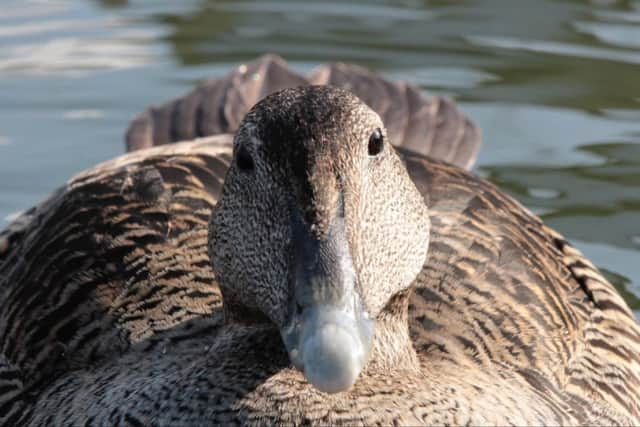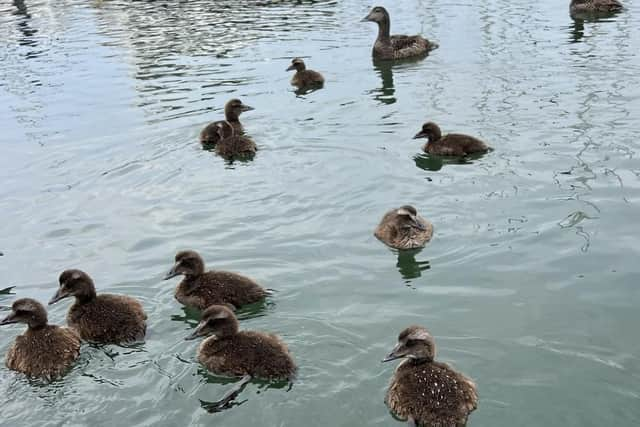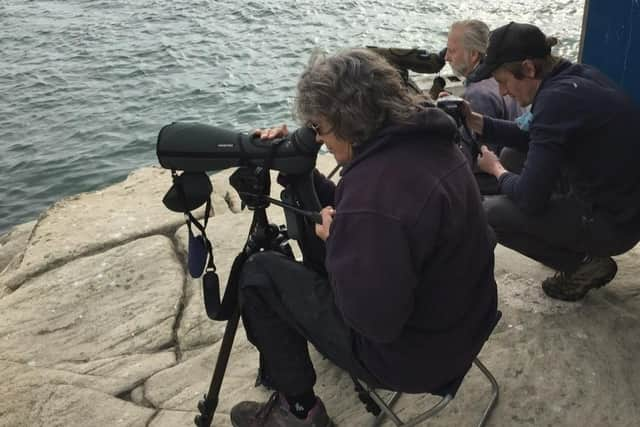Study reveals struggles of the iconic Eider duck in Northumberland
and live on Freeview channel 276
Ornithologist Hilary Brooker-Carey monitored the numbers of Eider ducklings arriving within the Coquet estuary near Amble on a daily basis during the breeding season from 1995 to 2021.
The estuary is a reception nursery area, vital to the survival of ducklings that leave nesting sites at nearby Coquet Island between May and July each year.
Advertisement
Hide AdAdvertisement
Hide AdThe island is designated as a Site of Special Scientific Interest (SSSI) and is home to the sole UK colony of Roseate Terns, Britain’s rarest nesting seabird, and an internationally important breeding site for some 80,000 nesting seabirds.


Despite this, the island is considered by Natural England to be in an ‘Unfavourable Condition’ because of the decline in numbers of nesting female eiders over the last two decades.
Hilary explains: “It all began 27 years ago when the local authority wanted to know which areas of the estuary were important to wildlife, in particular the Eider duck as it was considered a good indicator species.
"I soon became absorbed by the study and got great delight in watching the antics and behaviour of the ducklings and their attendant females. My early work was on Eider duck presence within the estuary as a means of highlighting the conservation importance of the estuary in interpretation panels and leaflets about the harbour at Amble.”
Advertisement
Hide AdAdvertisement
Hide AdHilary added: “It became clear quite early in the study that the Eider ducks on the Northumberland coast were in trouble, with numbers steadily falling year on year and the study was helping to shed light on Eider duck behaviour and their needs for survival.


"I am delighted that this research has now been published so that it can be shared with other researchers as I believe it is our joint responsibility to help support our special seabird communities along the North East coast.”
Hilary’s efforts were guided and encouraged from the beginning by Dr Paul Morrison, ex-site manager for Coquet Island and a former coast management officer.
With thousands of data points collected over 27 years, Hilary and Paul recruited Professor Chris Redfern from Newcastle University to carry out an analysis.
Advertisement
Hide AdAdvertisement
Hide AdThe resultant paper sheds light on Eider duckling distribution and loss within the estuary, and how duckling arrivals are affected by environmental conditions.


Professor Redfern explains: “Hilary has collected an incredible amount of data over a 27-year period and this gives us a unique and very detailed picture of the arrival and loss of Eider ducklings from the Coquet estuary.
"Her data show that by monitoring ducklings in the estuary we can estimate the breeding success of Eiders on Coquet Island and how this is affected by environmental changes.
"Her data provides a platform for promoting Eider conservation locally which will enable human and wildlife activities to exist together within the Coquet estuary.”
Advertisement
Hide AdAdvertisement
Hide AdA particularly famous colony of Eiders lives on the Farne Islands. They are often called Cuddy's ducks after St Cuthbert, the patron saint of Northumberland who established laws to protect them in the seventh century.
The paper is published in Bird Study: https://www.tandfonline.com/doi/full/10.1080/00063657.2023.2286297